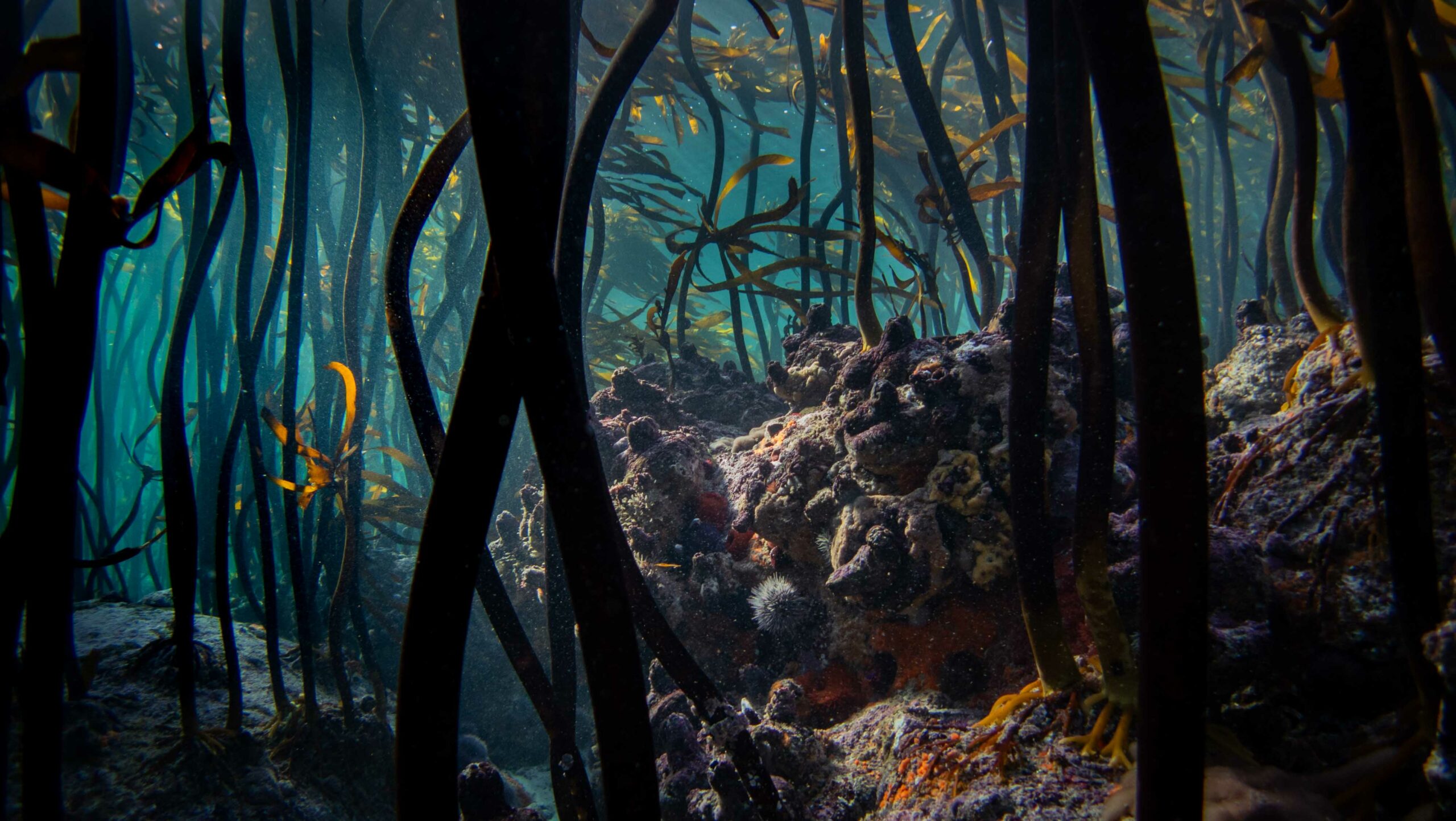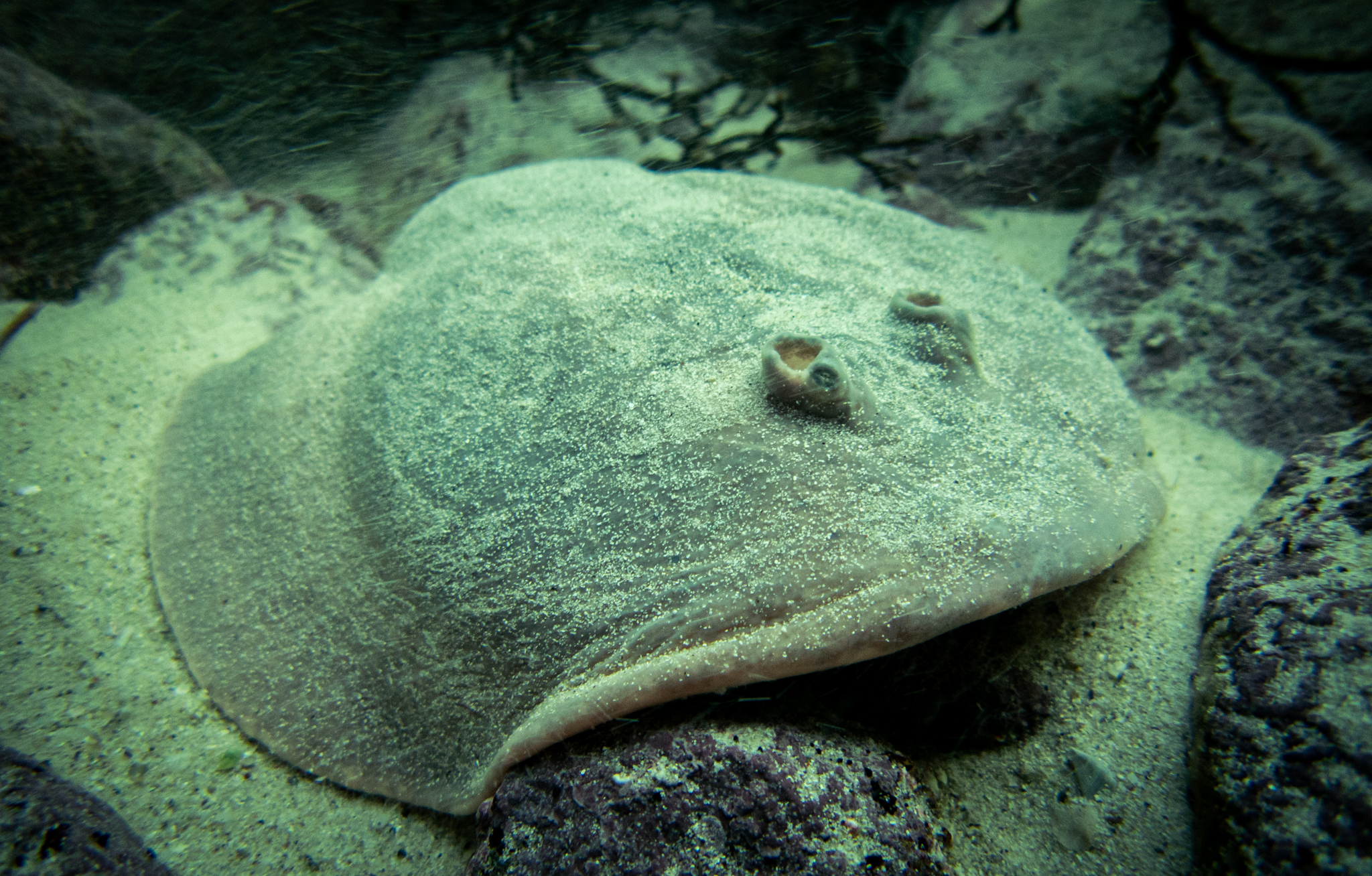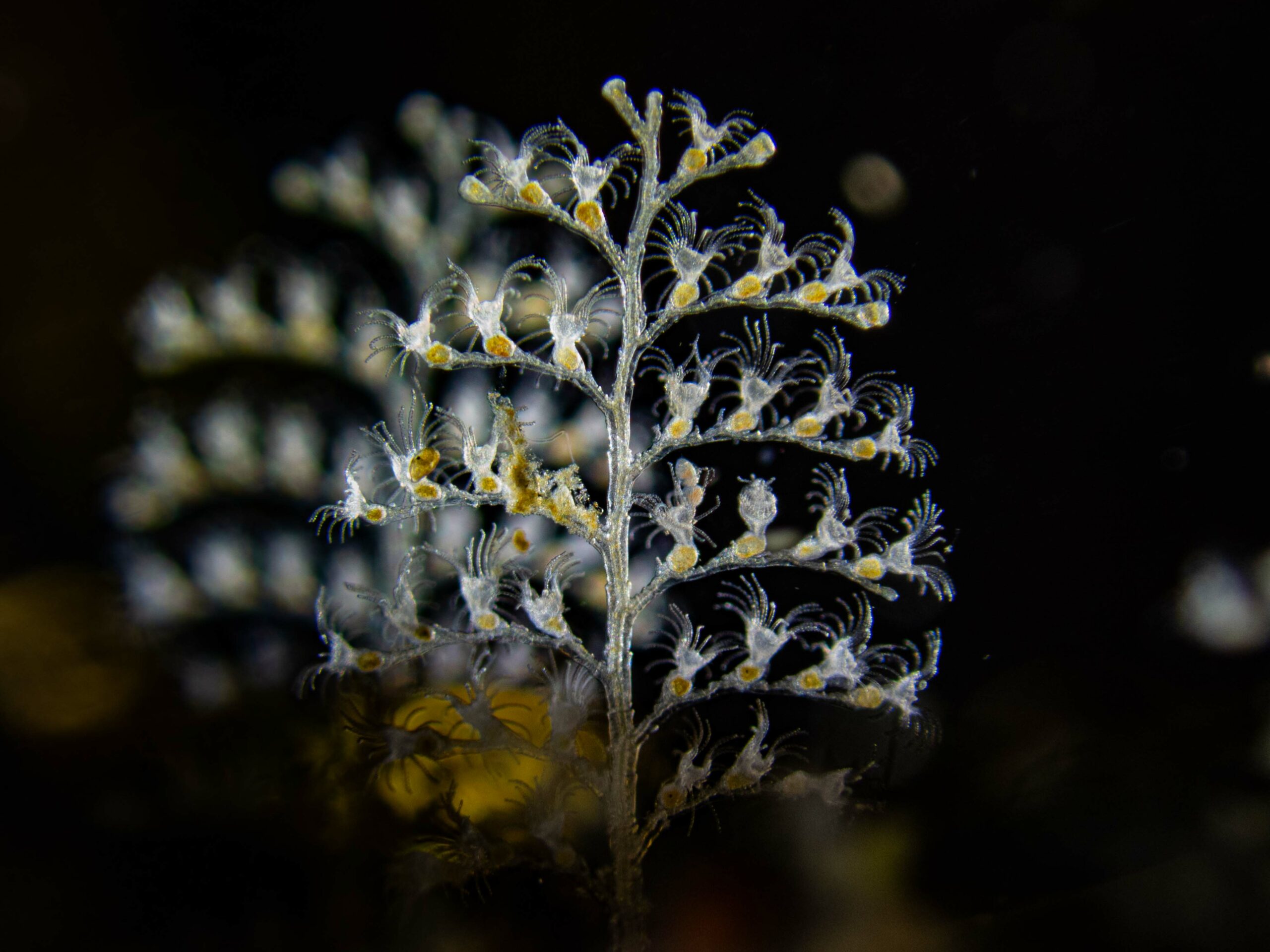A kelpforest species community approach
When trying to understand biodiversity there are different angles one can take. One of them is to look at one species at a time in great detail. Another one is to have an all-encompassing approach that looks at whole species communities in an ecosystem, that can help understand how a system functions as a whole.

The Great African Seaforest grows like a ribbon along the southwestern coast of South Africa. I always wonder – which and how many species really live here? Photo © Jannes Landschoff
In 2022 I co-supervised the B.Sc. (Honours) project of Emma Rossouw, who used molecular techniques to analyse environmental DNA (eDNA) samples from kelp forests in False Bay. “Environmental DNA is DNA that organisms produce and shed into their surrounding environment” Emma explains. “Imagine a fish swimming through the kelp forest, foraging. As it swims, it perhaps sheds some mucus or even urine/faeces which contains the fish’s DNA. We can capture this DNA, by taking a water sample. Through a similar process that forensic scientists use, we can track and determine which DNA belongs to which fish species.”
The goal of the study was to test whether sequencing DNA sampled from water collected in a kelp forest could detect associated species and provide a more holistic understanding of the community that lives here. This project was overseen by Prof. Sophie von der Heyden, at Stellenbosch University. Recently, and together with seven co-authors (and I feel honoured to be part of this team), Emma published her results in the peer-reviewed journal npj biodiversity. Her open-access paper called “Detecting kelp-forest associated metazoan biodiversity with eDNA metabarcoding” found over 900 organisms in only 36 litres of seawater sampled at different times in 24 hours. Emma’s study adds a large body of knowledge to the ongoing efforts of showcasing the Great African Seaforest as hyper-diverse system of species that needs to be conserved.

One species we found in the eDNA signal is the Onefin electric ray Narke capensis, a small ray with a real superpower. When threatened the muscle tissues on the side of its head can stun the attacker using and electric shot. Photo © Jannes Landschoff
Emma’s results also revealed the presence of some benthic species of sharks and rays, like the Onefin electric ray, the Spearnosed skate, or the uncommon Tiger catshark, a species not often seen by divers but detected here and exemplifying the benefits and power of the technique. Most of the total of 922 organisms present in the data set, however, were invertebrates, often rather small ocean creatures, many of them inconspicuous and hard to find. This study therefore showed that eDNA metabarcoding can significantly add to the numbers of species we think are present in an ecosystem. Finding this many different organisms was really a pleasant and interesting result!

What surprised us was the large number of over 104 Cnidaria (‘jellyfish-related’ species), in particular the large number of hydroids (example picture) present in the eDNA signal. Due to the lack of barcoding reference libraries, we could hardly identify any of them to species level. Photo © Jannes Landschoff

Lead author Emma Rossouw preparing an eDNA sample during one of the night-time sampling events of the study. Photo © Jannes Landschoff
We found that the main limitation, however, was the lack of well curated genetic reference libraries with “genetic barcodes”, a situation that is exacerbated by the poor state of taxonomic species knowledge for most species. To identify a piece of DNA of an unknown ocean species there needs to be an already existing sequence record that has a correctly assigned species name. But when there is no such barcode reference, there is just nothing to compare the unknown sequence to. For our study this meant that although we know we had 922 different organisms in our dataset, only 19, so only about 2% (!!!), could be identified to species level. Emma recollects for the fishes: “We would really have loved to see better taxonomic resolution in the eDNA results. We could only identify a handful of the fish to species-level, so I think the paper really emphasized that our kelp-forest associated biodiversity is understudied.“
Through my eyes, this makes Emma’s study even more interesting as a highly important pilot study, and I am really proud of her for persisting to get her results published. This is the first study that provides foundational insights into the biodiversity of the Great African Seaforest using an eDNA species community approach. It provides impressive data on how rich and unique our kelpforest-associated diversity is, but it also reveals how we are truly only looking at the tip of the iceberg when we talk about biological diversity. There is just so much more out there than we think. Understanding this better, and having the data to prove it, is a profound step forward as this knowledge marks the Great African Seaforest as conservation priority.
